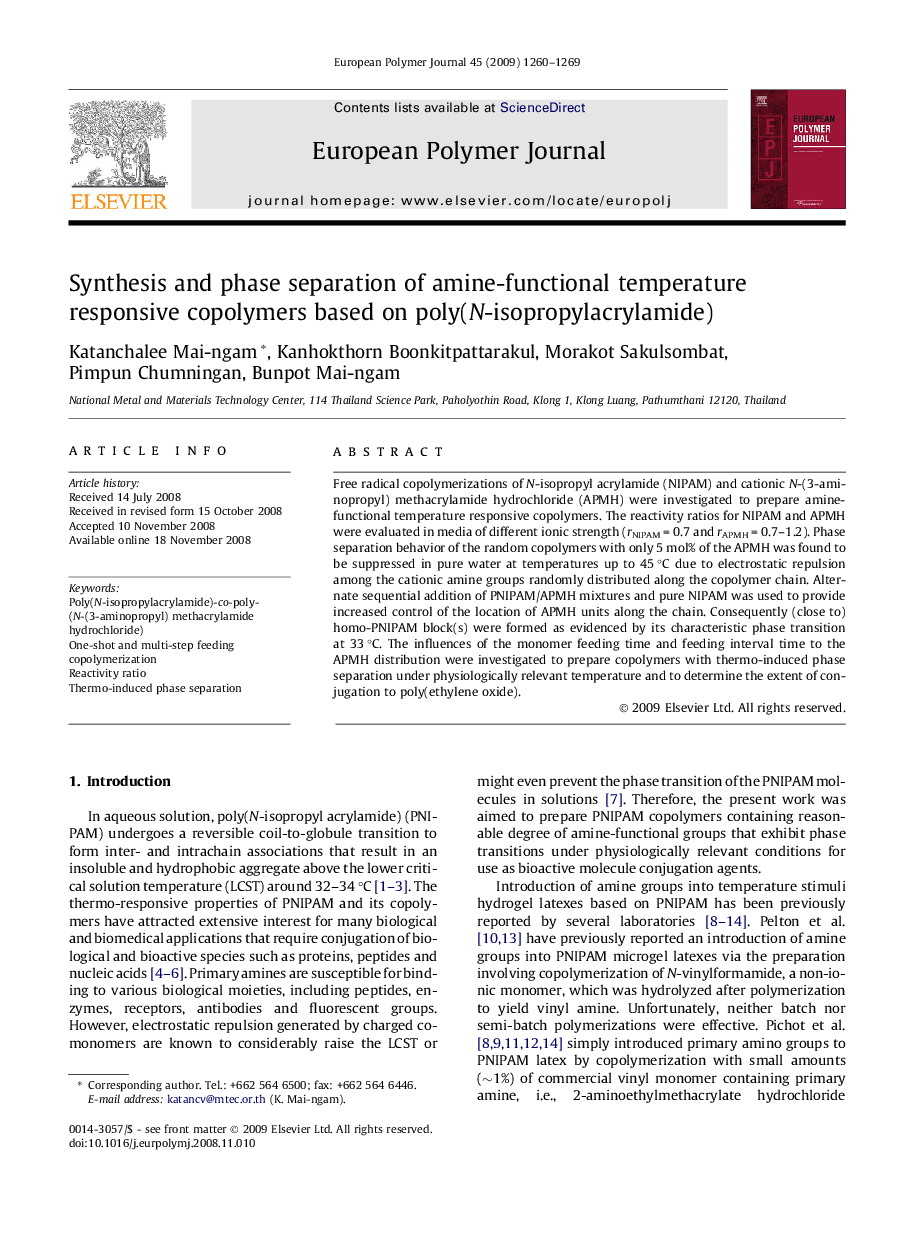| Article ID | Journal | Published Year | Pages | File Type |
|---|---|---|---|---|
| 1396368 | European Polymer Journal | 2009 | 10 Pages |
Free radical copolymerizations of N-isopropyl acrylamide (NIPAM) and cationic N-(3-aminopropyl) methacrylamide hydrochloride (APMH) were investigated to prepare amine-functional temperature responsive copolymers. The reactivity ratios for NIPAM and APMH were evaluated in media of different ionic strength (rNIPAM = 0.7 and rAPMH = 0.7–1.2). Phase separation behavior of the random copolymers with only 5 mol% of the APMH was found to be suppressed in pure water at temperatures up to 45 °C due to electrostatic repulsion among the cationic amine groups randomly distributed along the copolymer chain. Alternate sequential addition of PNIPAM/APMH mixtures and pure NIPAM was used to provide increased control of the location of APMH units along the chain. Consequently (close to) homo-PNIPAM block(s) were formed as evidenced by its characteristic phase transition at 33 °C. The influences of the monomer feeding time and feeding interval time to the APMH distribution were investigated to prepare copolymers with thermo-induced phase separation under physiologically relevant temperature and to determine the extent of conjugation to poly(ethylene oxide).
